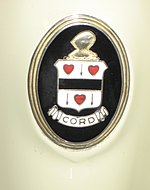M. M. Rose School
M. M. Rose School is a historic school building in Detroit. It was built in 1898 and succeeded an earlier one-room M. M. Rose School built in 1886. M. M. Rose (died January 21, 1892) taught at Bishop School and became the principal of the predominantly "Colored" Fourth Ward School that became known as Everett. She worked to elevate its status in the face of discrimination. She became the Detroit Public School District's first female principal. The school is at 5505 Van Dyke. A new Rose School was built nearby in 1979 and the old school closed when it opened in 1980. The old Rose School building is the oldest extant public school building in Detroit. Its condition is deteriorating. The new Rose School closed in 2007.
Excerpt from the Wikipedia article M. M. Rose School (License: CC BY-SA 3.0, Authors).M. M. Rose School
Van Dyke Street, Detroit
Geographical coordinates (GPS) Address Website Nearby Places Show on map
Geographical coordinates (GPS)
| Latitude | Longitude |
|---|---|
| N 42.380555555556 ° | E -83.016388888889 ° |
Address
M.M. Rose Elementary School (closed)
Van Dyke Street 5505
48213 Detroit
Michigan, United States
Open on Google Maps







